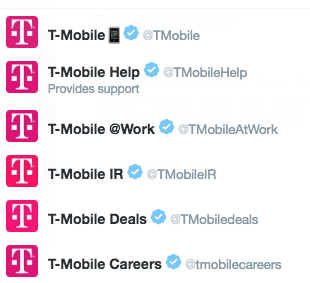Brands have started using Twitter’s latest customer service tools


Brands have been using Twitter as a customer service tool for years, dealing with everything from legitimate complaints to hashtag trolls. Now, a new update on the platform is making the two-way communication between brands and their customers a lot easier.
Users searching for brand accounts or looking at a tweet or direct message which tags a brand can now see a “Provides Support” button that they can tap if they wish to start a conversation. The update, rolled out Thursday, is the latest step the social platform has taken to improve its customer-support functionalities for marketers in recent months, after upgrading direct messaging earlier.
“With this update, Twitter is now the front desk that customers can go to, to be directed to the right department,” said Kevin Del Rosario, associate director of social media at Huge. “Whereas earlier, it was a big, confusing space where no one knew exactly where to go.”
Both Facebook Messenger and Instagram have emerged as prominent social customer service channels for brands recently. With increasing competition, it makes sense for Twitter to step up its game. Either way, several brands, including Delta, T-Mobile and United have already activated the feature on their accounts @delta, @united and @TMobileHelps. Additionally, brands can also display their hours of availability to help set people’s expectations for when they are likely to reply.
“The new features that Twitter just rolled out are a great addition to their focus on customer service,” said K.C. Geen, United’s director of social media and content marketing. “These features will not only help customers quickly understand that United has a fully operational social care team, but will also help customers reach a representative much quicker than before, resulting in faster resolutions.”
According to Ian Cairns, customer service product lead at Twitter, many brands have multiple accounts to take care of communications for their different product lines or departments. One of the biggest advantages is for brands with a range of such accounts, as it helps them streamline customer support questions to the right account.
T-Mobile, for instance, directs all customer service queries to @TMobileHelps, while also operating other accounts such as @TMobile and @TMobileAtWork. This is because the brand’s Twitter customer service team, called “T-Force” actively fields requests from over 180,000 customers per month on Twitter.
“We aren’t bots, we are a team of real people that are listening and responding,” said Michelle Mattson, T-Mobile’s director of social media care. “It’s one of our most important tools for customer service.”
Delta, on the hand, has a different approach, and handles its customer service from a central @delta account, which it uses for all its promotional and marketing efforts as well. The airline used to maintain a separate @DeltaAssist account for real-time customer support including rebooking, flight information, airport details and additional services, but decided to fold it all in within one account in April this year. “We wanted to make sure our customers were getting everything they needed in one place,” said Tammie Duncan, the brand’s customer care and social media manager.
Of course, not all brands are activating the new feature — or using Twitter actively as a customer service tool. For Benefit Cosmetics, the volume of customer service inquiries it receives on the platform has never been high enough to warrant a dedicated customer service account like @TMobileHelp versus @TMobile.
“At this time, we don’t plan to flag our account as a support account or add support hours because our primary goal is to engage with ‘Benebabes’ about a variety of topics, not narrowly marking our Twitter account as a support channel,” said Ginger Pelz, social media manager at Benefit.
More in Marketing

The case for and against organic social
Digiday has delved into the debate, weighing the arguments for and against marketers relying on organic social.

Inside Google’s latest move to postpone the cookie apocalypse
Despite Google’s (most recent) assurances that it would stick to its (newest) game plan, there has been a lot going on as of late.

While Biden signs the TikTok bill, marketers still aren’t panicking
No one seems convinced (yet) that an outright ban will happen anytime soon.





